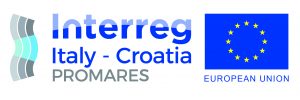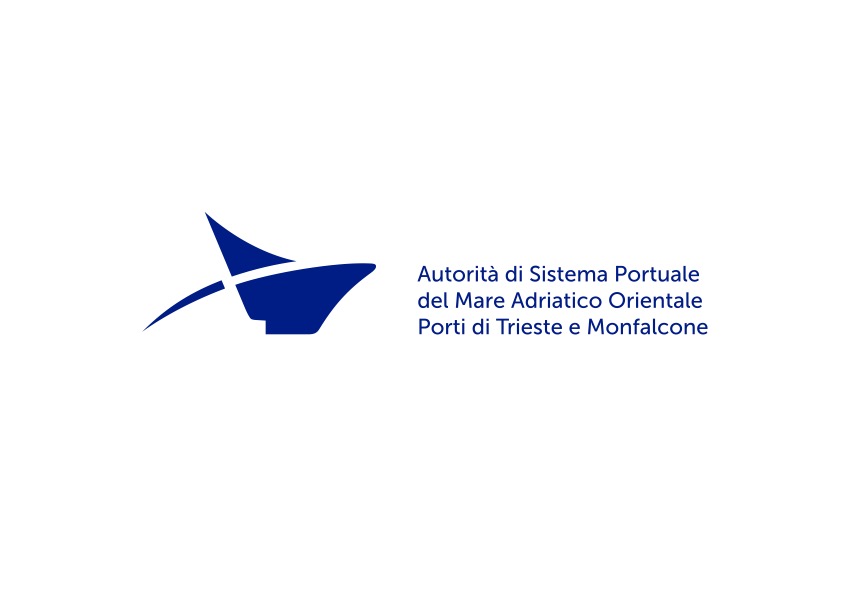Enhancing cross-border maritime and multimodal freight transport by involving transport stakeholders and policy makers facing the same cross-border challenges by using ICT applications is one of the main objectives of the Port of Trieste. Located in a cross-border area, the main feature of the Port of Trieste is represented by its legal status of Free Port. In fact, the Free Zones of the Port enjoy the legal status of customs clearance exception and do not belong to the customs territory of the European Union, which involves a whole series of beneficial operating conditions for the Free Port of Trieste.
Thanks to PROMARES project the Port tested a new ICT pilot action, which is fully replicable in other contexts. It is important to underline that the new ICT module increases the data accuracy and it certificates that goods moving between Free Zone areas do not change path; moreover, it reduces the road congestion due to the increase in traffic flows and optimises the use of the current port infrastructures, which is important also for environmental sustainability.
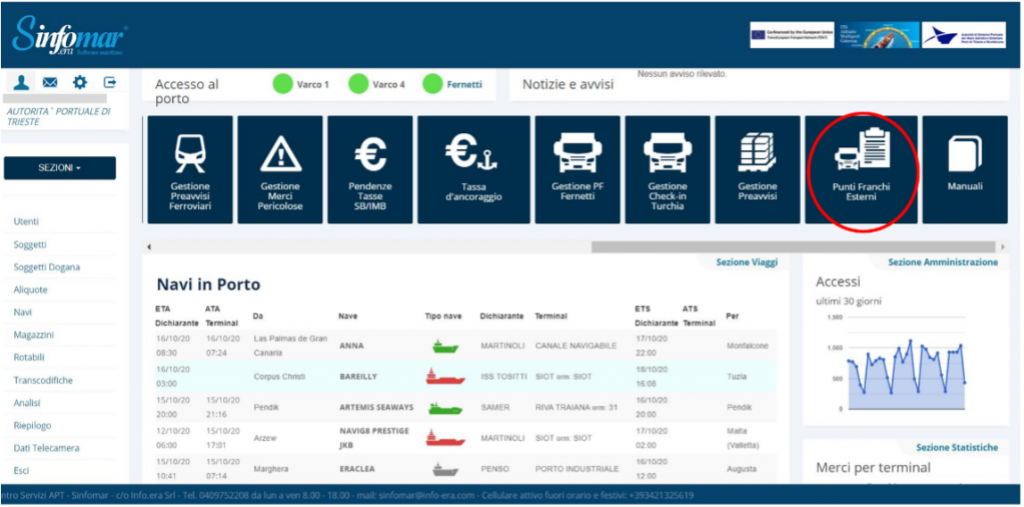
In the design of the Port Community System PCS, called “Sinfomar”, it was necessary to consider the special legislative situation of a Free Port of Trieste, which currently includes five distinct Free Zones, three of which reserved for commercial activities and two used for industrial activities. Against this background, it is necessary to allow the free flow of goods between Free Zone areas also outside the Port areas and, at the same time, reduce the road congestion due to the increasing traffic flows, thus optimising the use of the existing infrastructures.
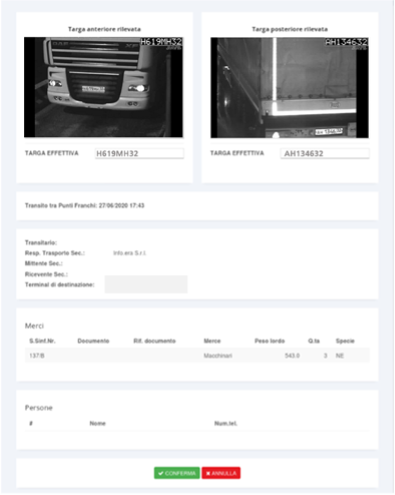
In fact, the aim of the pilot action consists in creating a new module of the PCS Sinfomar dedicated to the management of the movement of goods between external Free Zone areas outside the Port of Trieste, using data from existing cameras both for rail and road transportation to ensure the traceability of goods.
The new module of the Sinfomar PCS would manage the goods arrived in a Free Zone area to be transferred to another Free Zone area using road or rail transportation in a controlled way, without implementing traditional customs operations, but using ICT procedures and tools (such as cameras or virtual gates). This module would manage at the same time logistical data, data to identify the subject responsible of goods and customs data.
As highlighted before, the peculiarity of the International Free Zone Area of the Port of Trieste has to be carefully considered in the implementation of the activities. The Port Network Authority is the body entrusted with the management and control of all Free Zone areas in the territory of the province of Trieste. More specifically, additional functionalities are established in Sinfomar concerning the management of pre-arrival notifications in the Free Zone areas, management of vehicles in the Free Zone areas and management of vehicles directed to the port of Trieste using and without using a customs corridor.
At operative level, to properly utilise the functionalities enabled in the module “External Free Zone Areas” (literally “Punti Franchi Esterni”) in the PCS Sinfomar, it is necessary to update the registry of the warehouses in Sinfomar, by registering in the PCS the data concerning the free zone area/s. Then, the processes are based on the concept of “pre-arrival” that is a declaration made by the local representative of the carrier or by the carrier itself. The pre-arrival collects data of three different types: (i) logistical; (ii) customs related; (iii) about the driver. The customs data concern details relevant from the customs point of view in relation to the goods to be loaded or unloaded from a warehouse in a free zone area. By opening the link associated to the Sinfomar number of a selected truck it is possible for the terminal to confirm the arrival and in addition, it is possible to visualise the details of the goods transported by a specific truck.
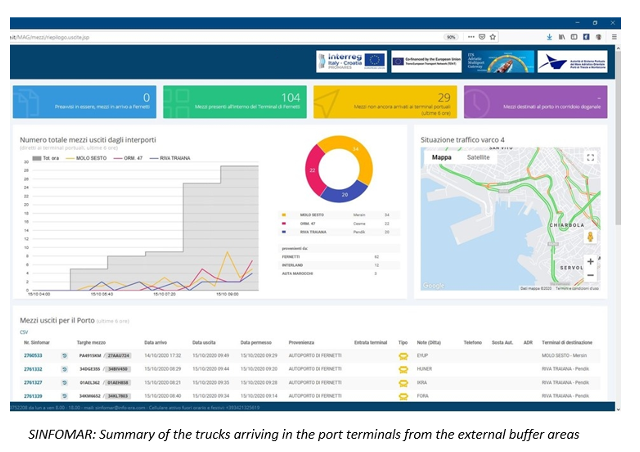
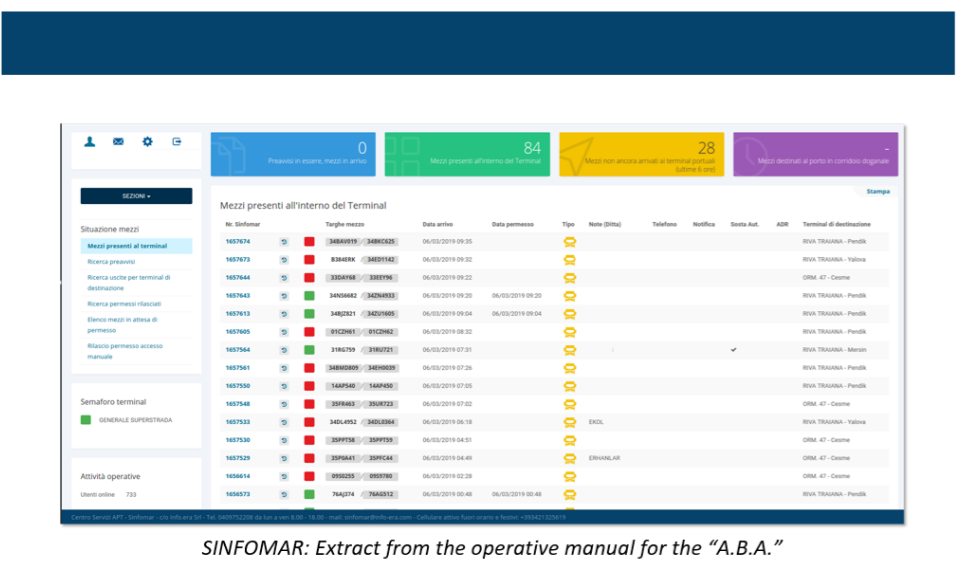
In particular, the pilot action focuses on the private external buffer areas that are named as “Authorized Buffer Area – A.B.A.”. Regarding this, the official regulations and guidelines for obtaining A.B.A. authorization with an operative manual were approved by the Port; constant support is offered by the Port to the operators for a proper use of PSC Sinfomar and by now Port authorized five operators to be A.B.A. and manage the road traffic of Ro-Ro trucks directed to the Port of Trieste.
The results gained with this pilot actions have important impact on the Port Community, since this initiative helped to support the management of the traffic in a particular period like the lockdown caused by the Covid-19. Therefore, this action is really appreciated by the operators and all port stakeholders.
Share this article in your social media
Although we ensured to have up-to-date and accurate information, the publisher OPEN ENLoCC, nor the editor and the author, are not liable for errors and omissions. The publisher and the editor did not test products or services described and their inclusion does not imply any form of endorsement. By accepting advertisements in this publication, the publisher does not warrant their accuracy, nor accept responsibility for their contents. The publisher welcomes unsolicited manuscripts and illustrations but can accept no liability for their safe return. Reproduction (in whole or in part) of any text, photograph or illustration contained in this publication without the written permission of the publisher is strictly prohibited.
© 2022 OPEN ENLoCC All rights reserved.
European regional review, Issue SPECIAL 2022/2
